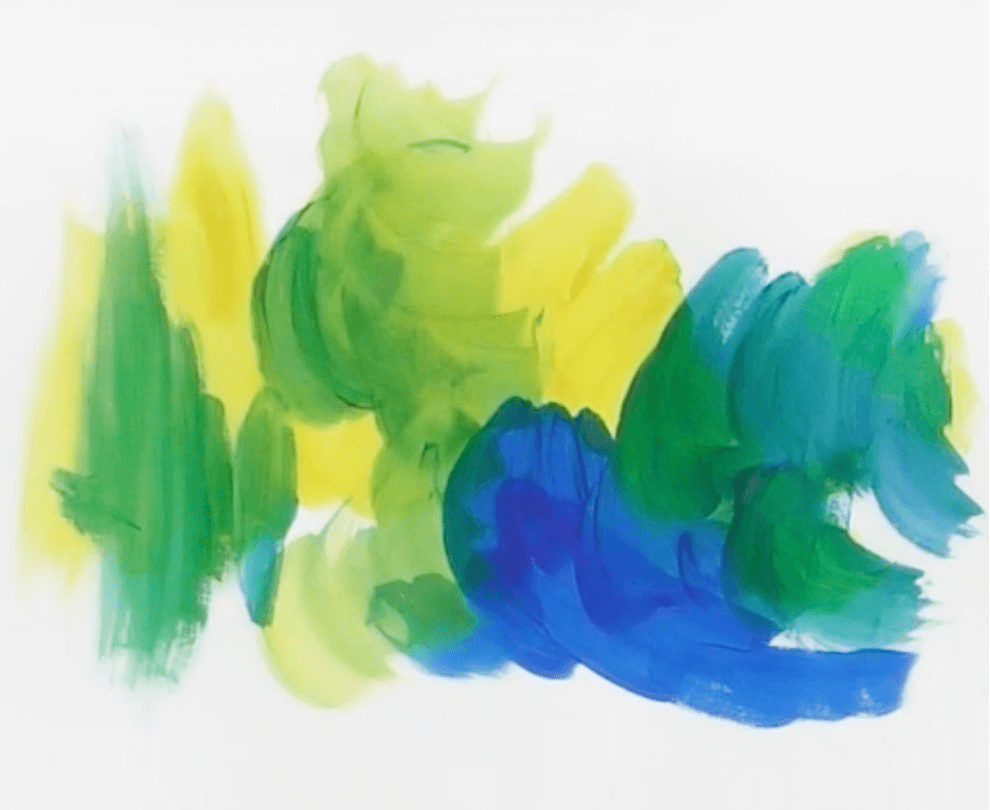Overview
In this activity, children will explore painting with the primary colors and transform them into new colors.
Materials
- Primary color tempera paints in cups
- Water in a cup
- Paintbrush
- Sponge
- Paper
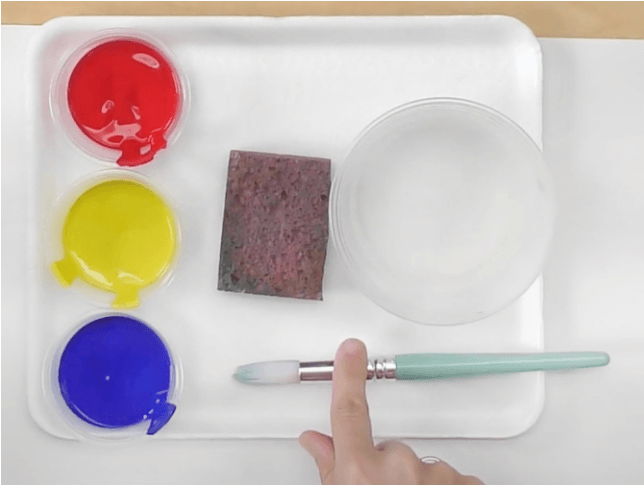
Activities
Let’s look at what you have to paint with today:
- A paintbrush. It has bristles on one side—these are the little hairs that carry the paint. The other side has a handle to hold the paintbrush.
- Water to clean the brush
- A sponge to dry the brush
- Red, blue and yellow paint. These are called the primary colors.
- Paper to paint on

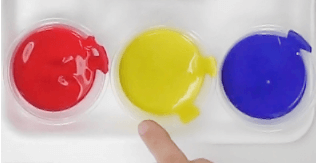

Do you know why the primary colors are special? We can mix them together to make new colors!
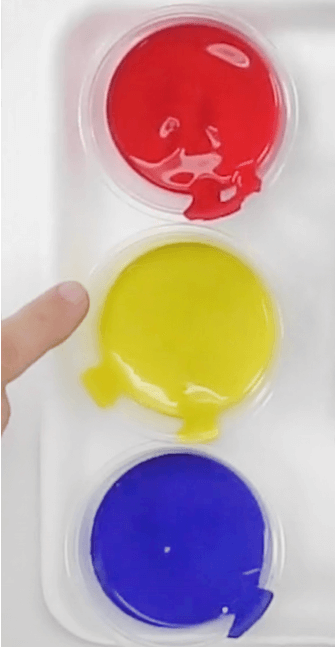
Let’s try mixing two of the primary colors together!
Dip your brush into the yellow paint—not too much, just the tip. Paint some yellow on your paper.
Now, rinse your brush in the water. You can say: “1, 2, 3, stop” as you rinse. Then, dry your brush on the sponge.

Now that your brush is clean, you can add some blue next to the yellow. What happens when they meet? It makes green!

I wonder if you can make a different kind of green. Rinse your brush, then see what happens if you add more yellow to the green. It makes a lighter green!
I wonder how you can make a darker green. Maybe you can add more blue.
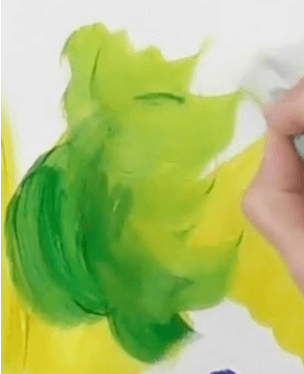

Let’s try another pair of primary colors. What do you think will happen if you mix yellow and red?
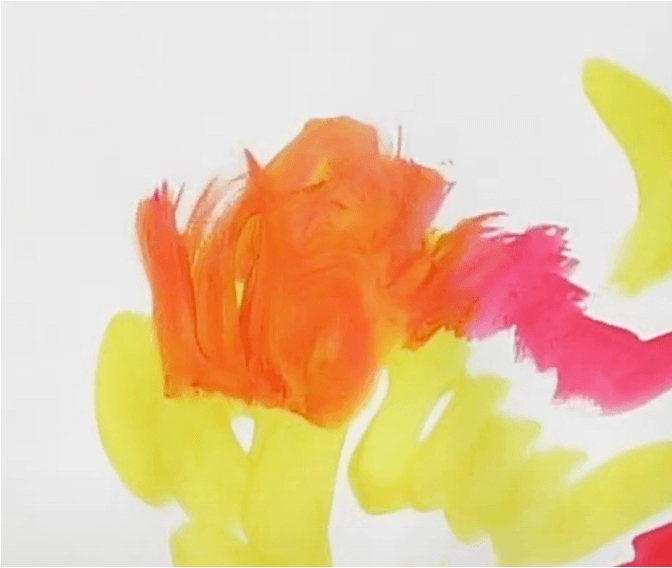
Try the last pair—red and blue. It makes purple! If it’s not quite purple, you can keep mixing and add more blue or more red.
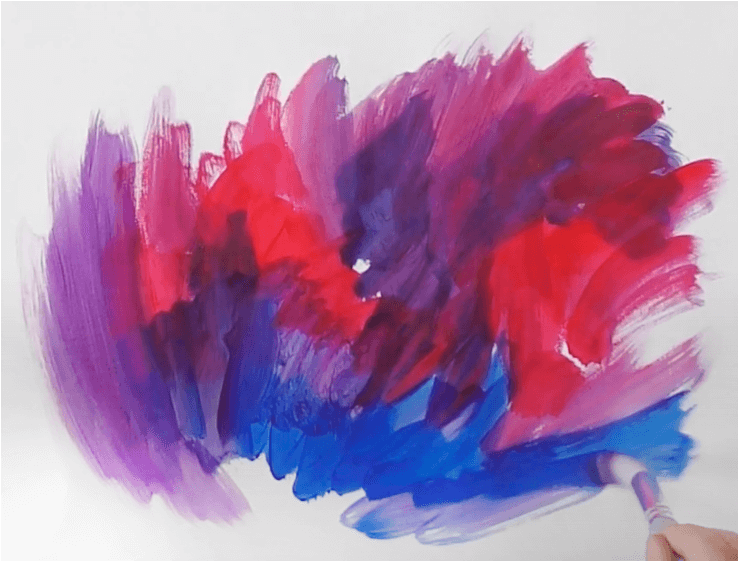
You made green, orange and purple. These 3 colors are called the secondary colors!
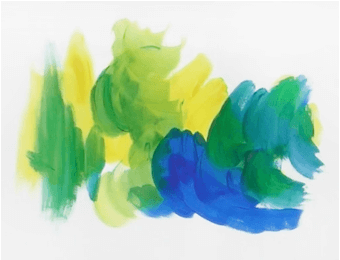

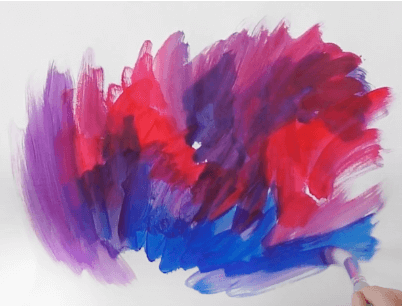
What do you think will happen if you mix all 3 colors together? Why don’t you try it!

Reflection
Point to one color on your painting.
How did you mix that color?
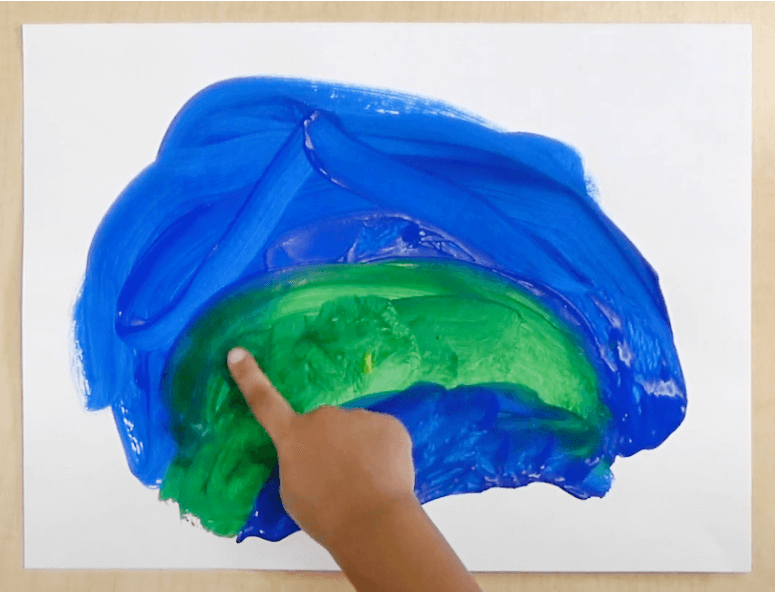
Video
Credits
Written By:
Andrea Burgay, Director of Digital Learning
Lesson Development:
Julie Applebaum, Senior Director
Sassy Kohlmeyer, Director of Early Childhood Programs
Copyright © 2023 Studio in a School NYC LLC

